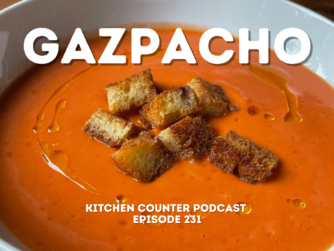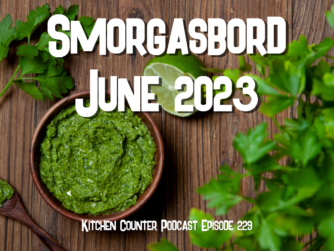You want to cook more meals yourself, rather than relying on eating out, takeout, or just popping a frozen box dinner into the microwave. The problem is you don’t have that much time, and quite frankly, you’re kind of tired after working all day and you don’t feel like laboring away in the kitchen to put a hearty and nutritious home cooked meal on the table. So what’s a person to do?
Enter the slow cooker, otherwise known as the crockpot (which is an actual brand name, but is often used generically for all slow cookers). With this seemingly magical little device, you can do some minimal prep work with your ingredients, and get outstanding results with practically no effort and a little time. Because of the low wattage involved, slow cookers can be used while you are away from home (e.g. at work) and have a meal ready for you when you return. If you don’t use your slow cooker (or want to use it more), or don’t have one, listen on for everything you ever want to know about this underrated kitchen appliance. Afterwards I’ll share some resources to get you started with a ton of slow cooker recipes.
What is a slow cooker, and how does it work?
Simply put, a slow cooker is an appliance that consists of a heating element, an insert (or crock) made of ceramic or porcelain, and a lid. The function of a slow cooker is to cook food at a low, steady temperature. It does this much better than pretty much anything else in your kitchen. Because of the low wattage involved you can safely leave your slow cooker plugged in and working while you are out of the house.
Varieties of Slow Cookers
Slow cookers come in an endless variety of shapes and sizes, and features. Here are four from Rival Crock-Pot that show the range of what is available (even more expensive models exist, though I’m not sure they deliver as much value for the cost):
Crock-Pot SCR300SS 3-Quart Round Manual Slow Cooker, Stainless Steel
Crock-Pot SCCPVL600S Cook’ N Carry 6-Quart Oval Manual Portable Slow Cooker, Stainless Steel
Crock-Pot SCCPVL610-S Programmable Cook and Carry Oval Slow Cooker
Crock-Pot SCVT650-PS 6-1/2-Quart Programmable Touchscreen Slow Cooker, Stainless Steel
Slow Cooker Recipes
Here are resources to get you started off with a ton of slow cooker recipes!
Tips for getting the most out of your slow cooker
– Prep your slow cooker ingredients ahead of time (not necessarily the night before–think a few days ahead), and keep in fridge or in ziploc bags until ready to drop in the crock.
– If you don’t have time or don’t want to hassle with sauteeing your aromatics (onion, garlic, etc) you can cut them up and put them in a bowl with some oil. Microwave for a few minutes, then toss into the crockpot!
– Cheaper cuts of meat, with bone in, are better for the slow cooker. Lean meats, light meat chicken, and fish…not so much.
– Don’t put frozen meat directly into the crockpot. It will take longer to come to a safe temperature (and the texture might be a little off as well).
– Don’t overfill your slow cooker–you need to leave room for heat to circulate so everything makes it to proper temperature.
– Don’t open that lid too often – Every time you open the lid of the slow cooker a ton of heat escapes. You need to add about 20 minutes of cooking time on to the recipe for every time to open the lid!
– Use less liquid than a recipe calls for (unless the recipe is specifically designed for a crockpot). Because your slow cooker will do most of its work with a lid on, moisture will not have a chance to escape and will therefore remain in the crock.
– When you slow cook food for an extended period of time, all the flavors begin to meld together. Adding something to the finished dish can be just the trick (olive oil, parmesan cheese, lemon juice, vinegar, sauted garlic, fresh herbs, ginger, dash of wine, can all be great finishing touches to help your flavors pop).
There are a few things that slow cookers can’t do, or don’t do very well
Because of the low temperatures involved, slow cookers generally aren’t good at rapidly cooking food
Slow cookers won’t end up browning any meat you cook in them. If you want browned meat, you’ll need to do that separately before you put it in the crock.
Seafood and dairy products generally don’t fare too well with slow cooking. If you are using them, add them late in the cooking process and watch their progress closely.
The care and feeding of your slow cooker
Don’t store cooked food in the crockpot insert.
Don’t put a cold crock into a hot base (or vice versa), as it could cause the insert to crack.
Wash your insert by hand. Consider investing in crockpot liners to facilitate cleanup it it’s a problem.
Periodically inspect the slow cooker cord to ensure it’s in good shape and doesn’t pose a fire hazard.



